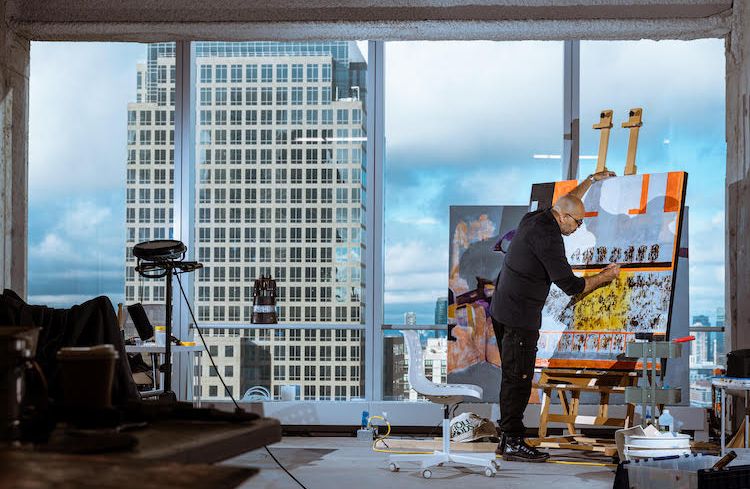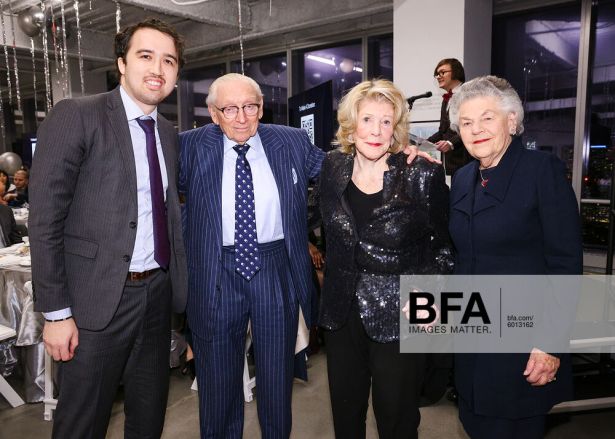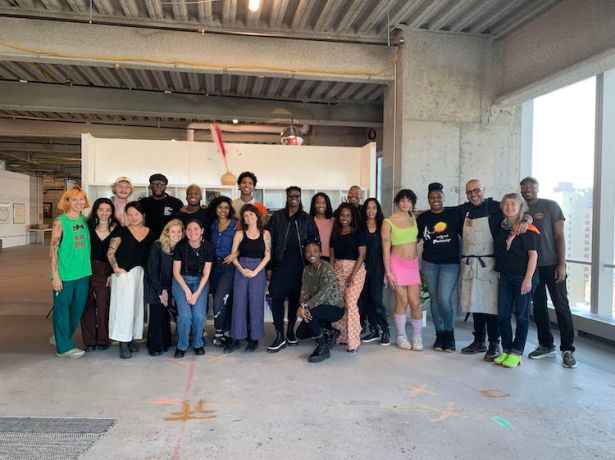Presented By: Partner Insights
How The World Trade Center Became a Premiere Incubator for Visual Artists
By Partner Insights December 5, 2023 8:28 am
reprints
For up-and-coming visual artists in New York City, the notion of having a large studio space that allows them to do expansive work is often little more than a pipe dream squashed by the reality of high rents.
But for 28 artists every year, this fantasy becomes reality, as they get to create their art in a majestic studio on the 28th floor of 4 World Trade Center, inspired by light on all sides and unencumbered views of the New York City skyline.
This is all thanks to Silver Art Projects, a 501(c)(3) not-for-profit organization founded by Cory Silverstein that grants artists a year long residency in just such a studio along with unprecedented networking, community building, and career advancement opportunities that have, for many, led to gallery shows, high-level representation and more.
Silverstein, grandson of Silverstein Properties chairman Larry SIlverstein, spent some time in real estate private equity before founding Silver Art in 2018.
“I’m from a New York real estate family, and the arts and philanthropy were a big part of the family’s interest when I was growing up,” said Silverstein. “My grandfather was on the boards of various arts organizations, and I spent a lot of time visiting museums and galleries and being exposed to artists.”

Silverstein, along with college friend Joshua Pulman, conceived of Silver Art as a way to help struggling New York artists. He persuaded his grandfather to donate the 28th floor of 4 World Trade Center, and also obtained contributions from organizations including Rockefeller Brothers Fund and Booth Ferris Foundation.
“Art adds an exciting dimension to our lives and everything we do. Great art in public spaces has the ability to elevate those spaces and make them sing,” said Larry Silverstein. “This initiative, and the many others we support, extend our company’s history of supporting art and artists, and ensures they remain an integral part of the fabric of Downtown Manhattan.”
Gregory Alan Thornbury joined Silver Art as its executive director this past June, after serving as the vice president of the New York Academy of Art. Thornbury decided to join the organization after talking with Silverstein at a dinner party, and being inspired by the organization’s mission.
“He started talking about how they sought to address inequities in the contemporary art world,” said Thornbury. “I came to see the space, and I could not believe what I saw – 45,000 square feet of 4 World Trade Center taken off the market to benefit artists.”
Silver Art receives thousands of applications from artists every year. After whittling down an initial list, the organization sends the finalists’ applications to a rotating panel of nine art world luminaries – the panel’s roster changes every year – who decide on the final 28, then stay on as mentors for the artists throughout the year.
“If you get into the program, it’s like being anointed by the Justice League of America,” said Thornbury. “Last year we had Mickalene Thomas, one of the world’s most celebrated painters. We had photographer Tyler Mitchell, and Eugenie Tsai, chief curator of the Brooklyn Museum. We had Roxane Gay from the New York Times. We had Swizz Beatz, who’s one of the major collectors in the country, for the next cohort. This year, Venus Williams is serving, who’s a very knowledgeable collector.”
The program serves a variety of artist types, including painters, sculptors, photographers, and artists that work in mixed media, textiles, and collage. Any visual artist the program can physically accommodate is eligible.
Studio space – each artist receives a space ranging from 500-1,500 square feet, depending on their need – is just one benefit of the program. The artists also participate in programs geared toward education and networking, such as bringing in art lawyers to help the artists understand what contracts should – and shouldn’t – look like.

“Beyond the space, we’ve established programming with a pedagogical focus on teaching best business practices, like how to get an auction, or how to speak with gallerists,” said Silverstein. “We also have curator days, where we have a group of curators that are organizing shows in the coming months come by. Between curators, gallerists, dealers, we had about 7,000 people come by in the past year.”
Given its non-profit status, Silver Art continually works to expand its already considerable reach throughout the worlds of art and commerce, hoping to increase recognition and donations. In late November, they hosted their first Silver Art Gala – which will occur annually moving forward – on the 40th floor of 7 World Trade Center. The event honored the legacy of the Art For Justice Fund, and art world luminaries Agnes Gund and Hank Willis Thomas.
“The thing I loved the most,” said Thornbury, “was that you had Larry Silverstein, Cory’s grandfather, this icon who rebuilt the World Trade Center, taking a photo with Agnes Gund, one of the greatest arts patrons in the city. The whole event was this combination of amazing people in real estate and then all these hipsters. It was something to behold.”
The program’s growing prestige is having a lasting effect on its artists. As a result of participation in the program, the artists involved receive career opportunities and advancements beyond what most could expect in any organic fashion.
“For the past two years, every single artist that has gotten into the program experienced a breakout moment,” said Thornbury. “They’ve gotten representation and solo shows, and they’ve wound up in permanent collections. We had two artists this year that had solo shows at the Brooklyn Museum, and they’re being collected by the Guggenheim, the Studio Museum of Harlem, and other prominent museums.”
As a result, the art world has begun to look at Silver Art as a reliable predictor of rising stars.
“Gallerists now are like, oh, a lot of work is being done for us here. Silver Art has become a bellwether in terms of predicting who needs to be seen in the art world,” said Thornbury.
Given the program’s success in large part thanks to his grandfather’s donation of space, Silverstein hopes that others in commercial real estate will see the positive effect the program is having on New York City’s arts community and decide to follow suit.
“We’re looking to solve inequities,” said Silverstein. “New York City has become prohibitively expensive for artists. We’ve developed a successful model, and it’s our hope that other real estate developers and owners may have available space and want to hop on board.”
“One thing I’ve seen in my few short months here is that Silverstein Properties has brought in prospective clients for 3 or 4 World Trade and said, ‘If you lease here, you not only get spectacular space, but this is also a vibrant arts and cultural center,’” said Thornbury. “Tenants come to Silver Art and people leave inspired. It becomes part of the cultural ecosystem of downtown Manhattan. It’s now the place to be.”


